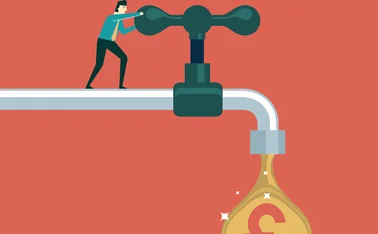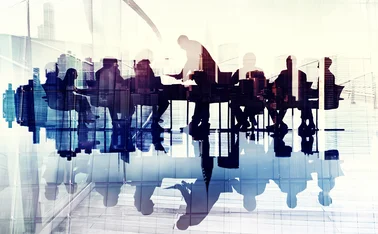
Clouds of glory
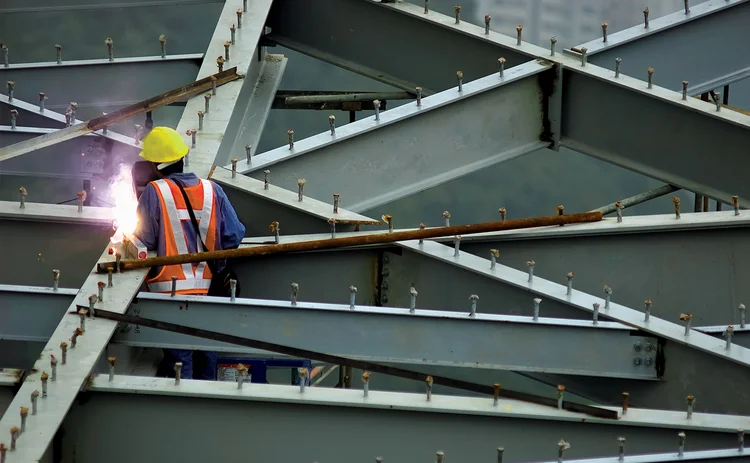
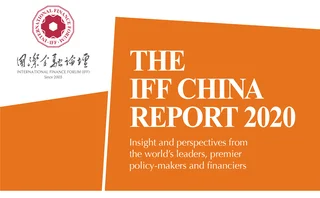
The true role of the Belt and Road Initiative (BRI) in promoting economic growth is gradually emerging. Since its inauguration in 2013, international co-operation projects have been signed with countries along the trade routes, boosting industrialisation and modernisation. By the end of 2018, Chinese enterprises’ non-financial investment in countries along the BRI was more than US$90 billion. From January to September 2019, it exceeded $10 billion. In Pakistan, for example, energy projects completed by Chinese companies over the past six years account for 30% of total electricity generated – an important contribution to solving energy shortages. In the Gwadar Port Free Zone, more than $600 million has been invested, and more than 20 companies have set up there. Over the past six years, Pakistan has significantly improved its ranking for its business environment and global competitiveness.
In the six years since its inception, the BRI has been endorsed by several international organisations, including the World Bank and the International Monetary Fund. Reports from these institutions, released in 2019, have shown the BRI’s effect in the global fight against poverty and spurring economic and trade growth in participating countries.
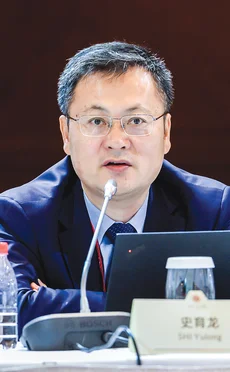
The BRI should meet the modernisation needs of countries along the routes. In August 2018, President Xi Jinping chaired a symposium on the BRI’s fifth anniversary. He proposed that the BRI should transform, taking high-quality development as its new principle. In April 2019, at the second Belt and Road Forum for International Cooperation, President Xi emphasised that the BRI should adhere to the concept of openness, green development, integrity, high standards, inclusiveness and sustainability.
The BRI can take the next steps in collaboration by transferring bilateral projects into tripartite or even multilateral co-operation. BRI projects on the cusp of implementation should be evaluated according to the current development stage of host countries and their real needs. For example, infrastructure facilities and energy projects account for a large proportion of the construction of the China–Pakistan Economic Corridor, which is now the country’s top priority.
A shield of steel
Another example is the Longsheng Steel Corporation, a private Chinese enterprise in Guangxi Province that invested in a steel project in Malaysia in 2014. China has the world’s largest steel capacity: 1 billion tonnes. To many eyes, the steel industry is a severe surplus industry: steel metallurgy consumes many resources and puts a heavy burden on the environment. Thus, it is believed there is no need to invest in the steel industry. However, Malaysia’s steel production in 2016 was 2.76 million tonnes, ranking fourth among the Association of Southeast Asian Nations (ASEAN). The top producer in 2016 was Vietnam, with 7.81 million tonnes of steel production. But, in 2016, Vietnam and Malaysia imported 16.96 million tonnes and 7.65 million tonnes of steel, respectively. What does this mean?
Malaysia, for example, produced only one-third of the steel it needed in 2016, leaving a gap of 5 million tonnes. ASEAN has a huge population and has developed rapidly in recent years, so there is a huge demand for steel, raw materials and basic products. Vietnam, along with Malaysia, Thailand, Indonesia, the Philippines and Singapore – the six larger economies of Southeast Asia – imported more than 60 million tonnes of steel in 2016. Longsheng invested in a project that requires the steel production of 3.5 million tonnes per year, which took four years to fill 70% of the Malaysian steel gap.
The evaluation of BRI projects should be in line with local needs and social context. The demands of development and economic growth should not be ignored. If a country is in short supply of steel, continue to push it to be environmentally friendly. If a country needs to turn raw materials into highly processed products, which means the country needs electricity, we must encourage it to focus on biodiversity. There is nothing inherently wrong with these ideas, but we cannot simply substitute one aspect for the other. We cannot ignore the serious shortage of energy and raw materials in these countries in the process of economic development, while simultaneously dealing with environmental protection and biodiversity.
The high-quality development of the BRI proposed by President Xi requires certain mechanism guarantees, embodied in a focus on the type of project and its location. BRI projects include infrastructure construction co-operation, resource development, processing and manufacturing, agriculture, trade and logistics, cultural exchanges, and environmental protection.
Financial co-operation
Let’s examine financial co-operation – a supporting instrument. First, it takes the form of outbound investment by enterprises, including cross-border mergers and acquisitions. Second, engineering contracting enterprises can also serve as a corporation’s instrument, such as the large number of overseas engineering contracts drawn up by China’s Gezhouba Group. Third, it can take the form of tripartite market development – China and France co-operate in developing the African market or nuclear power plants in the UK. China also co-operates with Japan in building the Eastern Economic Corridor in Thailand. Fourth, trade promotion accelerates trade growth in BRI countries. Fifth, multilateral development agencies and financial institutions – such as the Asian Infrastructure Investment Bank, the Asian Development Bank, the World Bank and Inter-American Development Bank – offer their support. It is imperative to get substantial funds from global private capital and official development assistance.
The BRI reflects various investment and financing models in different countries. Three aspects should be emphasised to realise high-quality development of the BRI.
First, financing sources should be diversified – for example, from developmental financing, policy finance, multilateral agency funds and private capital. If collaborative work is adopted in a BRI project, rules and provisions need to be integrated into the entire financial chain. This includes a credit rating; according to the current ratings system, many projects are not viable investments.
Apart from credit ratings, activities such as investment, financing, credit insurance and reinsurance should be conducted within the framework of collaborative rules. In the past two years, concerns on debt sustainability have risen. The second Belt and Road Forum saw the release of the Debt Sustainability Framework for participating countries of the Belt and Road Initiative. For countries along the route, debt sustainability is closely associated with financing. Is it necessary for invested countries and receiver countries to jointly discuss the establishment of new rules and models for the sake of debt sustainability? A risk prevention mechanism is also required – to determine how best to evaluate and prevent risks, and how to defuse risks that appear. All these problems require specific regulations.
Second, the bidding rules of a BRI project should happen very early on in the project timeline. For example, with the construction of the Hungary–Serbia railway, a conflict of regulations arose in the bidding for the project – Hungary is a member of the European Union and needs to implement EU regulations, while Serbia is not a member and therefore applied another different set of rules.
Green and sustainability rules should also be included. At the second Belt and Road Forum, China released the Green investment principles for the Belt and Road, but further efforts must still be made.
The third and final aspect to drive towards high-quality development is integrity. At the second Belt and Road Forum, the Beijing initiative for the clean Silk Road was officially launched. It is a common hope that BRI countries act in the spirit of integrity and ‘cleanliness’ to ensure the sustainability of the BRI.
How should these rules be designed? By being guided by the principle of extensive consultation. Some countries have existing rules to guide practice, yet we should consider the adaptability and acceptance of all parties. It is not wise to simply apply current international standards, which are often not appropriate or adaptable enough for the unique circumstances of developing countries. By current international standards and rules, many of the BRI projects would fail ratings tests.
In March 2019, the European Commission released its report EU–China – A strategic outlook, which included 10 points of action, including the publication of the EU’s international procurement rules and bidding rules by the end of 2019.
If those rules are to be applied to BRI projects for tripartite co-operation, more in-depth discussion and consultations with involved countries will be required. Only by forming a rule more in line with the actual situation – and that is more realistic and operable – can we ensure the real sustainable and healthy development of the BRI, and ensure steady and sustainable development.
Only users who have a paid subscription or are part of a corporate subscription are able to print or copy content.
To access these options, along with all other subscription benefits, please contact info@centralbanking.com or view our subscription options here: subscriptions.centralbanking.com/subscribe
You are currently unable to print this content. Please contact info@centralbanking.com to find out more.
You are currently unable to copy this content. Please contact info@centralbanking.com to find out more.
Copyright Infopro Digital Limited. All rights reserved.
As outlined in our terms and conditions, https://www.infopro-digital.com/terms-and-conditions/subscriptions/ (point 2.4), printing is limited to a single copy.
If you would like to purchase additional rights please email info@centralbanking.com test test test
Copyright Infopro Digital Limited. All rights reserved.
You may share this content using our article tools. As outlined in our terms and conditions, https://www.infopro-digital.com/terms-and-conditions/subscriptions/ (clause 2.4), an Authorised User may only make one copy of the materials for their own personal use. You must also comply with the restrictions in clause 2.5.
If you would like to purchase additional rights please email info@centralbanking.com test test test





